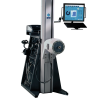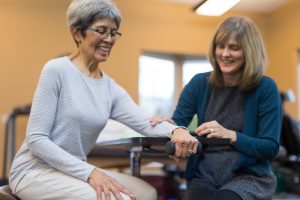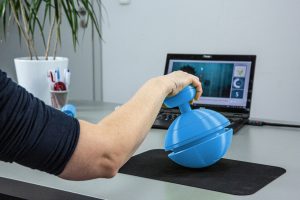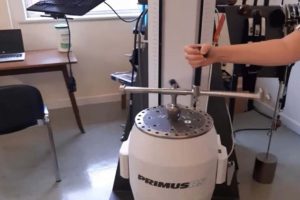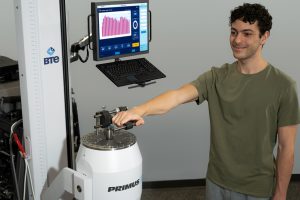
Grip Strength Testing, Exercises, and Functional Improvement
BTE System GuidesLearn how to measure hand grip strength, track progress, and enhance therapy outcomes with personalized grip strength exercises. Enhance injury recovery, build strength, and help patients regain functional abilities with the PrimusRS' advanced grip strength testing and treatment protocols.
Grip strength is a vital indicator of overall health, playing a fundamental role in physical therapy, occupational therapy, and specialized hand therapy practices. Measuring and improving grip strength is essential for rehabilitation professionals working with patients recovering from injury, aging adults, and work hardening programs. With the advanced capabilities of the PrimusRS, PTs and OTs can accurately measure grip strength, track progress, and develop personalized grip strength exercises. Watch the video below to learn how to measure grip strength and perform grip strengthening exercises on the PrimusRS.
Why is Grip Strength Important?
Grip strength has become a very important biomarker of overall health, especially for older adults. In addition to detecting hypertension, 1 grip strength is also a known indicator of several vital health factors, including:
- Mobility – While not directly used in walking, grip strength is strongly correlated to the ability to stand from a chair, walk, and climb stairs 2
- Upper limb function – Hands play a central role in upper limb function2
- Bone density – Low grip strength is associated with lower bone mineral density or osteoporosis and the risk of fractures2
- Fall risk – Similar to osteoporosis, fall risk is also greater in those with low grip strength 2
- Cognitive performance – Several studies report that middle-aged and older adults with weak grip strength are more likely to have mild cognitive impairment and executive functioning2
- Mental health – The association between low grip strength and depression have been well documented in several studies2
Many regard grip strength as a singular indicator of overall strength. While not the only relevant measurement of strength, it is certainly among the most important for aging adults. The best way to address grip strength in your hand therapy, physical therapy, or occupational therapy practice is to start with objective measurement.
Benefits of Grip Strength Testing in Rehab Therapy
Whether your clinical background is occupational therapy, physical therapy, or a specialization in hand therapy, measuring grip strength is often part of the initial evaluation.
Performing a grip strength test will tell you the patient’s baseline strength levels on both the injured and uninjured sides. Taking the time to objectively measure and document grip strength provides you with three major benefits:
- Compare grip strength differences between the injured and uninjured sides, using the uninjured side as your “control”
- Accurately dose the grip strength exercise resistance, based on the initial baseline
- Increase patient engagement by comparing the first grip strength test results to follow-up tests later in the course of treatment
How to Measure Isometric Grip Strength with PrimusRS
Among its many functions, the PrimusRS works well as grip strength measurement tool. The isometric hand grip test provides you with the most precise and accurate objective data. Using the PrimusRS grip strength tool, you will instruct the patient to squeeze their hand with maximum effort for five seconds, relax, then repeat. For a complete isometric hand grip test, the system will guide you through 3 trials on each side. The PrimusRS software measures and tracks the patients’ hand grip strength for both sides, and shows their progress over time.
You can perform an isometric hand grip test by itself or as part of a comprehensive evaluation, such as a functional capacity evaluation (FCE) or other pre-employment testing using specialized functional testing equipment. With its advanced grip strength measurement tool, the PrimusRS provides the most accurate and precise objective data. Therapists can monitor grip strength with real-time feedback on the screen as well as automated progress reports with charts and graphs showing patients’ performance. This detailed performance data provides objective evidence to support your clinical reasoning and documentation.
Grip Strength Exercises
After performing the grip strength test, next is increasing grip strength with exercise. Grip strength exercises can benefit people recovering from hand injuries or orthopedic surgery, older adults, or employees completing a work hardening program. Typical grip strength exercises focus on repetitive gripping to build strength and endurance.
Many grip strengthening exercises are very accessible and simple to perform. Common grip strength exercises include the plate pinch, farmer’s walk, wrist curl, gripping a hand grip strengthener or stress ball, and a variety of therapeutic hand movements without equipment.
These simple grip strengthening exercises work well for home exercise, where your patients may have limited access to exercise equipment. However, your in-clinic treatment sessions should always strive to provide a greater value to keep clients engaged and enhance their progress with advanced clinical techniques.
How to Increase Grip Strength with PrimusRS
With PrimusRS, you can perform a variety of upper extremity exercises, including grip strengthening. Using the same tool as the isometric hand grip test, you will position your patient for exercise and tailor the software settings for your patient’s session. For example, each resistance mode allows you to change the requirements of the exercise, such as:
- Concentric-eccentric
- Isotonic
- Isokinetic
- Continuous passive motion (CPM)
As always, exercise with the PrimusRS is completely customizable. Change the grip width to suit your patients’ needs and abilities. Increase or decrease the resistance in one or both directions of movement. Raise, lower, and angle the workhead to perform the exercise from seated, standing, or an angled position. These unique positions are especially helpful in work hardening or job task simulation, such as an overhead grip for car mechanics. Repeating these exercises helps build strength and endurance, which can help your patient return to their job or hobbies safer and stronger.
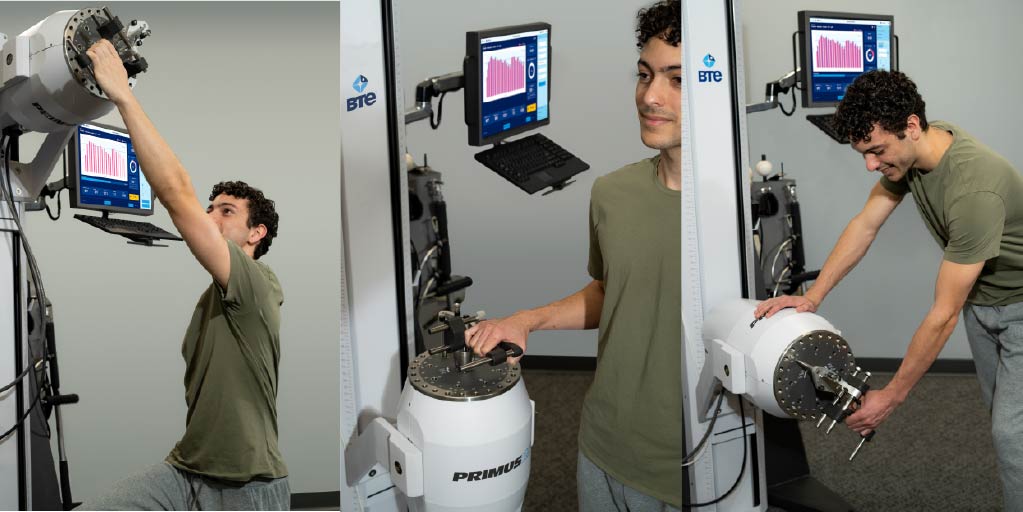
Enhance Patient Outcomes with PrimusRS Grip Strength Exercises
Grip strength exercises are a fundamental part of rehabilitation, promoting recovery, improving functional abilities, and addressing critical health factors like mobility, bone density, and falls prevention. The PrimusRS gives you unparalleled accuracy, precision, and customizability for objective grip strength testing. Its personalized grip strength exercises keep patients engaged with realtime feedback and automated objective reports to maximize patient progress.
By integrating advanced grip strength measurement and evidence-based exercise programs into your practice, you can empower patients to regain strength, function, and confidence. Whether for hand therapy, physical therapy, or occupational therapy, the PrimusRS is the ultimate tool for enhancing patient outcomes with objective measurement and functional exercise.
